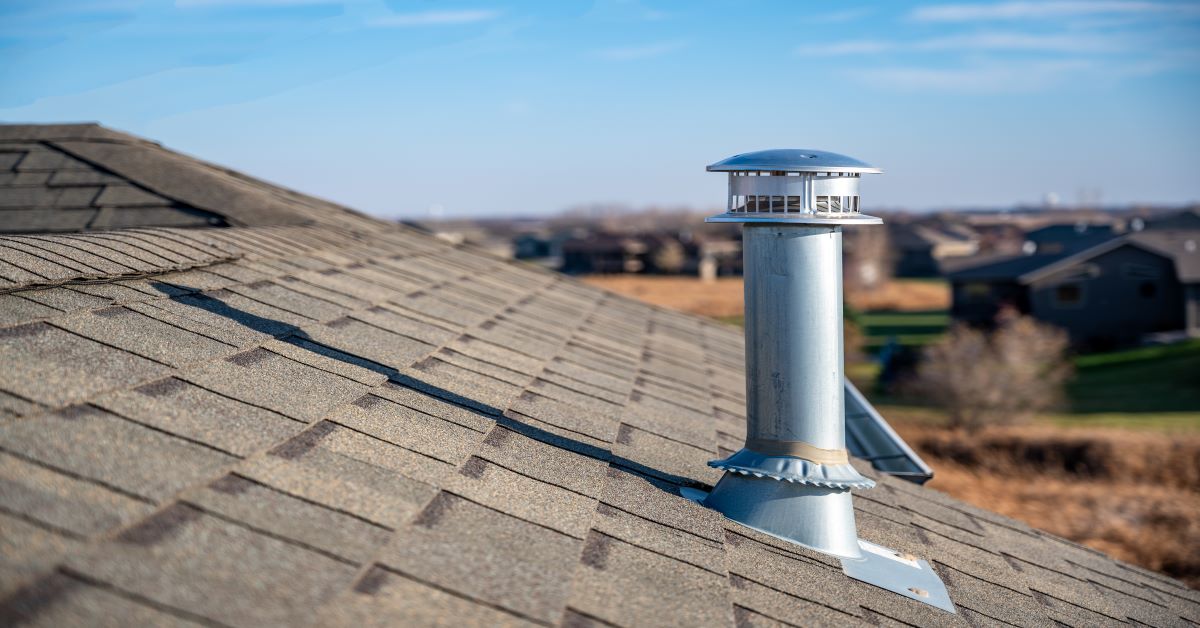Adding vents to your roof is a great way to increase the energy efficiency of your home. But, before you go about installing these yourself, it’s essential to know if this is a job you can do by yourself. While most homeowners prefer to contract a professional, some DIY enthusiasts may feel up to the task. So, is it possible to add vents to your roof without the help of a roofing contractor?
What are roof vents?
Vents are important fixtures that you add to the roofing system. They allow hot air in the attic to escape, which will improve your home’s energy efficiency and reduce your cooling costs during the summer months. In addition to helping with temperature control, vents also help prevent moisture from building up in certain areas or around appliances that may produce a lot of moisture, like dryers.
What are the benefits of roof ventilation?
The main benefits of installing roof ventilation include:
Limits roof damage
Roof vents allow hot air which rises in the attic to escape to the atmosphere. When temperatures are too high and there is no route for hot air outside, roofing shingles can warp and crack up at the edges, which undermines the longevity of your roof.
Improves the energy efficiency of your home
Hot air can collect in your attic without proper ventilation and cause high energy bills throughout the summer months. By adding vents to your roofing system, you’ll improve insulation, saving yourself money in cooling costs during warmer months.
Prevents moisture from building up in your attic
In addition to overheating, hot air can also cause humidity levels to rise and high moisture concentrations. This is not only a structural concern but can damage the interior of your home. Ventilation will allow warm moist air to escape into open space outside instead of staying trapped inside your attic.
Helps prevent mold growth
High concentrations of moisture in the attic can cause mold and mildew to grow, which will damage your roofing shingles and all of the insulation you have installed. By installing roof vents, you’ll eliminate the conditions that allow mold to grow.
Can we add vents to the roof?
Installing vents is not an impossible task but should only be done if you feel confident about your skills. Every home has a unique roof, which means there’s no one-size-fits-all solution for DIY enthusiasts who want to add their roof vents. In addition, several roofing issues could arise from DIY installation. If you’re not comfortable with the process or don’t have the right tools for the job, it may be best to consult a professional instead.
What should you know before installing roof vents?
Before embarking on your DIY journey, it’s essential to know what you’re getting yourself into. While some homeowners may be able to install roof vents on their own with a few tools and a little guidance from the internet, those who are less experienced should consider the following:
How many vents are enough?
The first thing you need to figure out is the number of vents you’ll be installing. This will help you know how much material is required and how much time this job is likely to take. As a general rule of thumb, you will need 1 square foot of vent for every 150 square feet of your roof. However, this will also depend on the climate of the area you’re in.
What type of vent should I use?
Roof ventilation comes with different types of vents, and each has its own set of pros and cons. You’ll need to determine what design is best for your roofing system. Here are a few options:
Power vents
These connect to the HVAC system, and they work best for homes. They will turn on when needed and shut down automatically when it’s not hot, which helps improve your energy efficiency.
Flat vents
These are placed under the roofing shingles to allow airflow out f the attic. This type of vent is usually more cost-effective but doesn’t come with advanced technology like power vents.
Gable-end vents
These are installed at the end of each gabled section and allow air to move from one location, making them ideal for homes that experience consistent high temperatures throughout the summer months. However, if you live in a place where it’s sweltering only on some days, this type of vent might not be the best choice.
Box vents
These are also known as “ridge vents” and allow air to escape from the entire roof. They’re great for most homes, but if you live in an area with high winds or a lot of snowfall during winter, this type of vent might not be ideal.

Soffit vents
Soffit vents are placed near the perimeter of your roof and work best for homes that experience high humidity levels. They’re not as effective in hot weather, but if you live somewhere with high moisture year-round, this type is a must-have!
Cupola vents
These are tiny vents that sit on top of the ridges and allow air to escape. They’re less effective than other types, but they offer a more decorative touch when snow accumulates during the year’s colder months!
Contact Pioneer Roofing!
For all your roofing repair needs, be sure to contact Pioneer roofing! We have been in the roofing industry for over ten years so that you can expect nothing short of professionalism from our technicians. Give us a call anytime to schedule an appointment.

